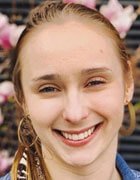
traffic_analyzer/DigitalVision V
Capturing social determinants of health data in rural health
Armed with a strong health IT system and dedicated nursing and social work team, Sparta Community Hospital acts on social determinants of health data.
Collecting social determinants of health data has become common practice nationwide, as healthcare providers seek to address health-related social needs in the name of clinical quality. But although these initiatives are growing, for rural health organizations, data capture is sometimes easier said than done.
Often strapped for cash, the health technology to support SDOH data capture and the resources to address health-related social needs, rural health providers face an uphill battle.
But they aren't completely out of the game, according to Susan Gutjahr, HIT director and compliance officer at Sparta Community Hospital in Sparta, Illinois. Rural health providers are a medical lifeline for people living in the area, putting out proverbial fires before discharging patients to larger facilities or rehab centers.
The same goes for SDOH care, Gutjahr noted. Armed with a strong health IT strategy and provider education plan, Sparta Community Hospital has been able to make deep inroads in its SDOH work.
Kelsey Waddill is a managing editor of Healthcare Payers and multimedia manager at Xtelligent Healthcare. She has covered health insurance news since 2019.
Sara Heath has been writing news related to patient engagement and health equity since 2015.
Susan Gutjahr:
The doctor can prescribe the best treatment plan, but if the patient can't eat healthy food, can't afford their medications, doesn't have a place to go at night, it doesn't matter how great that provider might be. We want to know what's happening so that we can put some resources towards these things potentially.
Kelsey Waddill: Hello. You're listening to Healthcare Strategies Industry Perspectives, coming to you from HIMSS 2025 in Las Vegas. I'm Kelsey Waddill, a podcast producer at Informa TechTarget. And today, I have the pleasure of chatting with Susan Gutjahr, HIT director and compliance officer at Sparta Community Hospital. We are going to be discussing the importance of social determinants of health data collection in rural healthcare systems and the challenges that these organizations face in gathering and employing that data. So, let's get into it. Susan, welcome to the podcast.
Gutjahr: Thank you, Kelsey. It's a pleasure to be here. As Kelsey said, I'm Susan Gutjahr. I'm the HIT director and compliance officer at Sparta Community Hospital, and we're located in Sparta, Illinois. And that's about 50 miles southeast of St. Louis, Missouri.
Waddill: Thank you. That's great.
Gutjahr: You're welcome.
Waddill: So, I know that you are here at HIMSS giving a talk -- well, for a lot of reasons, I'm sure -- about social determinants of health, gathering health-related social needs data for rural hospitals. And I was just wondering if you could walk our audience through some of the challenges that rural health uniquely faces in that effort.
Gutjahr:
Sure. Sure. So we are a 25-bed critical access hospital. And so, we don't have a team of case managers, caseworkers to accomplish this data collection. And actually, we had to start before CMS mandated because we are in a pay-for-performance and ACO with Blue Cross Blue Shield of Illinois that wanted us to collect this data and submit it in our physician clinics.
So one great thing a small hospital does is move quickly. We can move fast. But when we move fast on paper. So, that's how we started. We started on paper, creating the gathered questions that were required. And then, those get submitted and somebody gets on an Excel spreadsheet. And we submit them to Blue Cross and the ACO, and it was a tremendous amount of work. Tremendous.
So Wwhen we knew that CMS was going to mandate us to gather these on inpatients, we're like, "There's no way we can do this." And so we worked with our EHR vendor, and we used TruBridge, and they were formerly CPSI. So we worked with our EHR vendor because this was a new regulation for them as well.
And we're like, "We have to gather this." But we have to be smart on how we gather it, and it can't be paper. We created an electronic form in their system, and that was great for gathering, but it was a little onerous for reporting purposes.
Waddill: Okay.
Gutjahr: We partnered together along with some of the other smaller facilities they work with to beta a new strategy for them. And it was, how do they put task reminders out there for us? How do they guide us through the questions and then give us a nice dashboard in the end?
So we were successful with that working with them. And so that's one of the things we talked about today. But that's the easy part. There's three parts to social drivers of health or social determinants of health. And that would be your capture. Well, that really is the simplest part, and I'll tell you why in a minute. Then we have to act on it, and that's not a regulatory thing. Capture and reporting, the third, are the only two regulatory pieces. But as a small facility, those are your neighbors, friends, family, and people you're going to see in Walmart or somewhere in town.
And they expect when you begin to ask these really personal questions -- healthcare is personal, but it is medical. It is scientific. It's a little bit easier to ask some of those questions because you're coming at it from a science perspective.
Waddill: Yeah.
Gutjahr: When you begin to ask these personal questions like, "Do you have enough food to eat? Are you eating healthy? Do you have enough money to pay your utilities, do you even have a home, or are you jumping from house to house on different weeks or different nights as people let you?" It's very personal. It's a different kind of personal.
Waddill: Yeah.
Gutjahr: As we began to ask those questions, there's an expectation that finally somebody's maybe going to help them because we're all local. So, we worked hard and were very fortunate that our county does a needs assessment resource guide, community needs resource guide. It contains everything from what churches you might want to go to, the food pantries and other ways to get food, to transportation. So it became the exact resource we needed.
And one of the audience members, when I did my session, said, "Okay. So you got this resource, and you know that you're going to start referring these people to them. Did you reach out to them? Do they know? Could they take care of the needs of your population as you begin to identify maybe more than ever self-identified to these entities?"
That was a great question, and it is a definite thing that everybody needs to think about. You can find a solution, but you better make sure that solution can handle what you're going to send to it.
Waddill: Great.
Gutjahr: The other challenge we faced as we began to capture, I said, was who. Whose job was this in the organization? Everybody wears many hats already, and they all feel stretched and busy and didn't quite understand why there was another thing. Who had to do this? Well, can't social services do it? Can't nursing do it? Why isn't it the provider's responsibility?
There's a lot of burnout there when it comes to what they look at as administrative functions. So, we had to do some education. We had to make them understand the "why." Not just that it's required by law, but what are we going to be able to do for the patient? The doctor can prescribe the best treatment plan and know that this is going to take care of the patient. But if the patient can't eat healthy food, can't afford their medications, or doesn't have a place to go at night that's consistent, it doesn't matter how great that provider might be.
Waddill: Yeah.
Gutjahr: And so, I know that's what CMS is getting at. We want to know what's happening so that we can put some resources toward these things, potentially. There was a lot of education on the "why" and the "who." In the end, we chose to go with nursing, asking those questions as part of the patient's intake admission process into the hospital. And we did that because, number one, they're 24/7 nurses.
Waddill: Yeah.
Gutjahr: Yeah. We have social workers -- case management -- but they only work 9–5 or 8–4, five days a week. We knew that we needed to find out those answers upfront because you could come in on a Friday, and you could be gone by Monday morning faster than social services could be there to talk with you and help you.
So we worked with nursing. We embedded it into their documentation along with our EMR solution and provided education on the "why." And they're like, "That's fine. But what am I going to do because I have them now with the next shift or the next two shifts, and they're going to be looking to me?" And that's when we pulled out the resource guide. We showed them the education. We said, "We have the social worker that you can refer people to."
We're very fortunate because we got some grant funds. When we worked with our local behavioral health agency in the community, we got some grant funds. We are able to have, Monday through Friday, one of their resource people in our hospital. Depending on what the needs are, he is also available to refer people to. And many times, that's very beneficial.
Waddill: I'm sure.
Gutjahr: ... because he can assess and determine whether they qualify for their services or work with a social worker. All right. Our facility is coal mining country, farm country, or some industry, and a lot of people don't work local. They go out of town to work, and we don't have the huge social driver of health deficit that I suspect some rural areas have.
But right now, we're only asking our inpatients, and we paused our physician office because that program just ended with that insurer. So, we paused that. It'll be very interesting as we ramp up with the next phase from CMS -- whether we are going to see more positive responses. We have to ask emergency room patients and other hospital outpatient department patients.
So, we'll see. I say we have a smaller positive because a lot of our patients are in local nursing homes. Their needs are met. Even if they have needs, they're met. That's where we stand.
But last night, I had such a fabulous opportunity to moderate the executive forum's discussion on rural health and social drivers of health with some of the executives. And I got to tell you, sometimes, you live in your own little pocket of rural and your own little pocket of problems. There were two gentlemen from Italy, a gentleman from Canada, and I forget where the other was [from], but there was an internationally represented discussion.
Waddill: Right.
Gutjahr: And it was fascinating that the Italians have U.S. bases. So, they not only have to deal with their citizens and their needs but also now, the U.S.
Waddill: The military as well.
Gutjahr: ...military needs.
Waddill: ...and the families, I'm sure, too.
Gutjahr: One talked about, "we are rural, but you don't drive for hundreds of miles and not see anything where I live." However, that is the case as we talked to some, and they're like, "How do you get to them? How do you get them the resources?" That was a discussion everybody talked about.
One representative talked about how they partnered with local libraries, and the librarians now have gone through and had some training. They can help the community members log on for telehealth. They can help the community members get into their portal. They can help them access the different things through the local libraries, and it may not be an official library. But, many towns have some sort of local library establishment, whether it's for their schools or the town. So, that was really fabulous to think about: the true rural that are hundreds of miles away and really hard to get to. The gentleman from Canada was talking about that.
Waddill: Oh, yeah. Sure.
Gutjahr: They partnered with some stores or whatever the local establishment was to be able to provide things to the libraries, military, and guests that come visit. So, it was very fascinating to hear everybody talk about it. I know our challenges are real to our community.
Waddill: For sure.
Gutjahr: But wow, in the scheme of things, there is so much more to deal with, out there.
Waddill: Yeah. That's a great perspective. I think a lot of times for our podcast and, sometimes, for HIMSS, it's very U.S.-focused. There are pockets of International throughout, but getting that perspective is invaluable because you realize, "Okay. We have a lot to work with here. What can we do with that?" It changes the perspective from there is still scrambling involved.
Gutjahr: Absolutely.
Waddill: ...when you're into more positive.
Gutjahr: When you're in the day-to-day of it, it's the moment, the crisis, the need.
Waddill: Right.
Gutjahr: But when you stop, I feel like I'm going to be able to go back and say to nursing and to our social worker, "You're going to stop and breathe because think about what the other countries are having to deal with. Think about what the other parts of the United States that have such distances between any sort of resources are having to deal with. What if you had to figure out how to airdrop food to somebody?"
Waddill: Wow. Yeah.
Gutjahr: So giving them the food pantry list and making a call for them are their real needs. Their real needs, we're going to take care of. But in this scheme, breathe because it could be a lot different.
Waddill: Yeah. For sure. Yeah. Well, we're almost up on time here, but I did want to just ask, a lot of our listeners are not necessarily in rural health. What would you say to a lot of the industry? If there's one thing you could say to them about the state of rural health right now, what would that be?
Gutjahr: As far as the rest of those not enrolled, when I talk about starting on paper, when I talk about working with our EMR vendor and that lengthy process that happens, there are others out there going, "Really? They're struggling to capture this stuff? Seriously?"
But yes, we are not on the general, large of the largest EMRs. We have a good EMR company that works with us for rural. And so, yes, sometimes, we start at the very beginning with them to get to where we need to be. And in between time, there's paper or there's work through processes. And so they're like, "They don't even get what it's like because they're worried about acting on it."
Waddill: Yeah.
Gutjahr: They have larger volumes, probably day-to-day homelessness and day-to-day problems they're dealing with. But I'm going to suspect they also have a larger team that works with that than we do, than a nurse trying to wear multiple hats. I could be wrong, and I don't want to negate what they do because they do a great job.
Waddill: Yeah.
Gutjahr: I hope that they look at rural as absolutely necessary. We save lives in that emergency. We take care of our own. And then, we depend on them to support us, back us and give us our patients back because we can't lose all of our patients. So, let us get them ready for you. Let us send them to you. Take care of them and send them back to us.
Waddill: And by them, you're talking about the…
Gutjahr: Like rehab, skilled care, their outpatient needs…
Waddill: Yeah. That makes sense. That makes sense.
Gutjahr: Lots of small rural hospitals have what are called swing bed programs where we can take a bed that's typically an acute bed. But if that patient comes back to us and needs rehab but doesn't want to go to the nursing home -- they can't stomach that. They come into our swing bed, and we're using the same benefit package from the Medicare perspective that the nursing home would use.
You're in a hospital. It's a whole different frame of mind, and you're there to get better and get out. You're not in a nursing home thinking you might never get out. So yeah, it's a mindset for that.
Waddill: Yeah. Yeah.
Gutjahr: We're happy to have all our patients back. You go get your knee replaced. You go get your stents put in and your bypass, and then come back to us. We'll rehab you.
Waddill: Yeah. Oh, that's beautiful. Well, unfortunately, that's all the time we have for this conversation. I would love to talk more some other time and have you back on the podcast at some point. Thank you so much for your time here, and I hope you have a great rest of your time at HIMSS. I know this is the last day here, so you're probably heading out soon.
Gutjahr: Well, thank you, Kelsey. It was a pleasure, and it was nice to talk with you.
Waddill: Listeners, thank you for joining us on Healthcare Strategies Industry Perspectives. When you get a chance, subscribe to our channels on Spotify and Apple, and leave us a review to let us know what you think of this series. More Industry Perspectives are on the way, so stay tuned.
This is an Informa TechTarget production.





